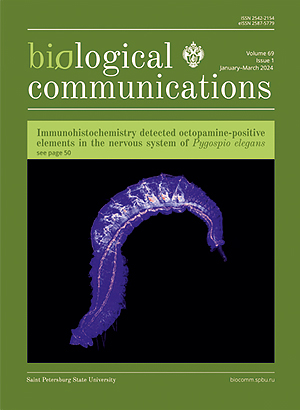Influence of subchronic exposure to manganese carried by female rats during pregnancy on the behavioral and cognitive abilities of their offspring at later stages of postnatal development
DOI:
https://doi.org/10.21638/spbu03.2024.102Abstract
The study evaluated the effects of prenatal exposure to manganese (Mn) on the functional state of offspring at later stages of postnatal development (PND). Female rats were treated with MnSO4·5H2O in the diet at a dose of 1433 mg/kg starting 28 days prior to breeding and through gestation. The pregnancy proceeded normally, no physical abnormalities were observed. There was a lag in physical development of the offspring, which was characterized by a later opening of the eyes, the formation of a coat and the eruption of incisors, the weight gain was attenuated from PND 0-84. Offspring had hyperactive behavior and deterioration in spatial learning and memory. The level of Mn in the blood serum and cerebral cortex was higher than the control values by 11 % and 53 % respectively. The acetylcholinesterase level in the serum was higher by 47 %. These findings highlight the risk of prenatal exposure to subchronic doses of Mn.
Keywords:
heavy metals, manganese, toxicity, prenatal influence, behavior, cognitive abilities, acetylcholinesterase, biomarker
Downloads
References
Downloads
Published
How to Cite
License
Articles of Biological Communications are open access distributed under the terms of the License Agreement with Saint Petersburg State University, which permits to the authors unrestricted distribution and self-archiving free of charge.





